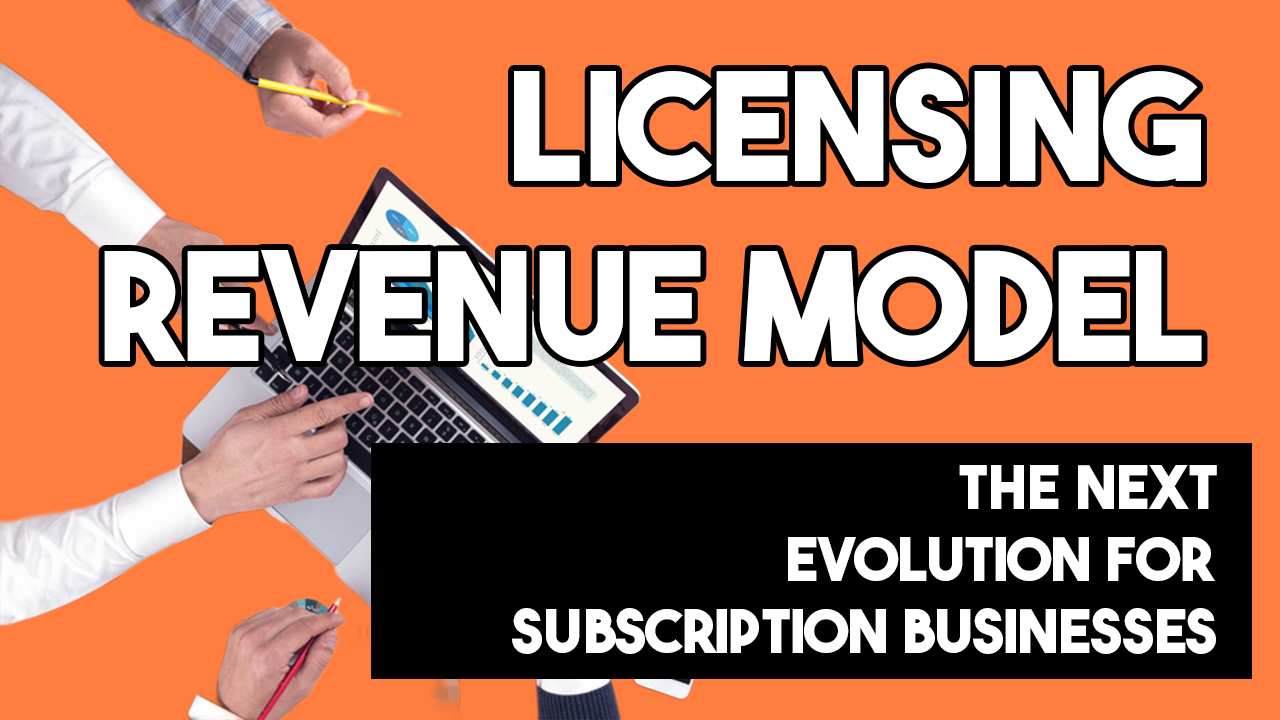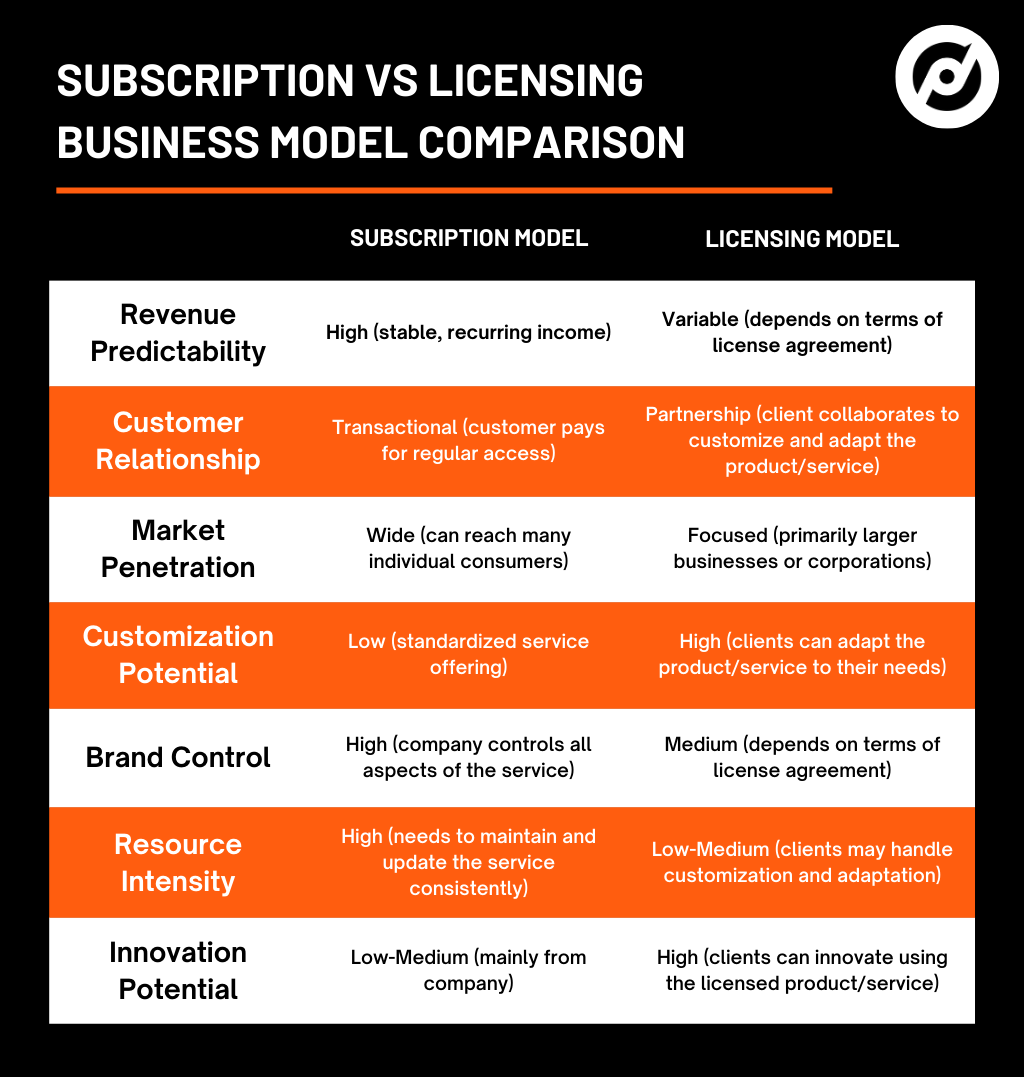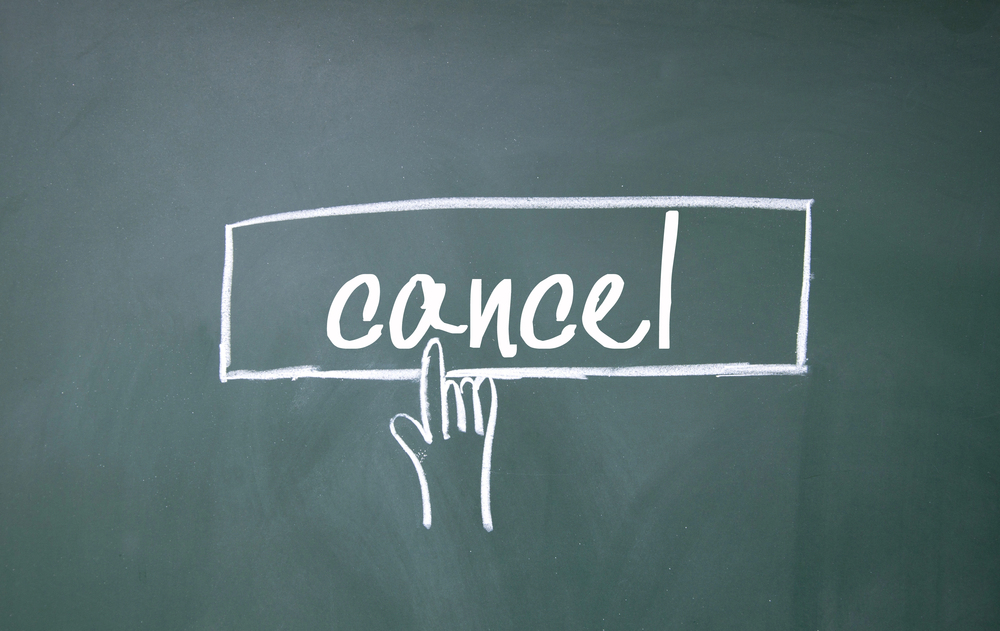
Licensing Business Model: A B2B Revenue Model to Supplement Subscriptions
Jul 14, 2023 3 minutes
In the digital era, the subscription business model has become a cornerstone for many companies across industries, providing a predictable, recurring revenue stream and cementing long-term relationships with customers. From streaming platforms to software providers, subscriptions have reshaped how businesses approach customer engagement and revenue generation.
But as business landscapes evolve, so do models for success. Today, we stand on the brink of a new business frontier – licensing your brand or service to partners, clients, and customers. This isn’t just an alternative to offering subscriptions, it’s an upgrade.
The licensing revenue model expands your brand’s reach, allows for more innovative collaborations, and caters to the rising demand for customization that modern consumers crave all while savoring exclusivity.
Subscription Models vs. Licensing Models
Let’s begin by breaking down the subscription and licensing models and examine their fundamental differences.
Subscription Models: A Steady Stream
A subscription model involves customers regularly paying a fee to access a product or service. Think of Netflix, Adobe Creative Cloud, or your monthly gym membership. These models have flourished due to their recurring nature, providing businesses and startups with a reliable and predictable income. Customers also benefit from consistent access to services or products they value.
However, subscriptions also come with limitations. They often function as a one-size-fits-all solution, offering the same features and benefits to all subscribers. While this simplicity can be a strength, it also constrains the capacity for customization—a growing demand among modern consumers.
Licensing Models: A Flexible Frontier
On the other hand, a licensing model involves granting a partner, client, or customer the rights to use your brand, technology, or service. This could take many forms – from a food company allowing another company to produce goods under their brand, to a tech firm licensing its software for others to use and customize.
Licensing models can bring several advantages. They enable a business to extend its brand or service reach without the need for scaling operations. They foster co-creation and innovation by allowing partners to adapt and develop the licensed product to their needs. Importantly, they respond to the consumer demand for personalized, adaptable solutions.
However, licensing isn’t without challenges. Intellectual property protection, quality control, and managing complex agreements can be daunting. Yet, with careful management, these obstacles can be navigated successfully.

Subscription versus licensing business models.
Licensing as a Supplement to Subscription: Serving Both B2C and B2B Markets
While the shift towards licensing offers many advantages, it does not necessitate the elimination of subscription models. In fact, the two can coexist, each serving a different segment of your market.
The Continued Relevance of Subscription Models
Subscription models continue to have their place, particularly in the B2C market. Many consumers appreciate the simplicity and predictability of subscriptions, particularly for services they use regularly. The recurring revenue from subscription models also provides a stable, predictable income stream that can help support the growth and development of your business.
The Power of Licensing for the B2B Market
For the B2B market, however, licensing models can often offer more value. Businesses tend to have unique needs and often require more customization and flexibility than a standard subscription can provide. Licensing allows them to adapt your service to their specific context, adding value and fostering a deeper business relationship.
Case Study: Software as a Service (SaaS) Industry
This dual model is often seen in the Software as a Service (SaaS) industry. Many SaaS companies offer subscription plans for individual users or small businesses, while simultaneously offering customized enterprise solutions for larger corporations, effectively utilizing a licensing model for their software.
Take Stripe, for example. Customers can use Stripe as-is. While they don’t necessarily have a subscription service, it is something paid for on an ongoing basis.
However, Stripe can license out its payment processing power and gateway to businesses looking for a more customized or branded experience. Like Shopify, which has a gateway that’s powered by Stripe but also offers more features or different features based on its user base.
Your subscription business needs a subscription-specific merchant account! Get yours now.
Advantages of Licensing Your Brand or Service
Understanding the benefits of licensing your brand or service can open your eyes to new possibilities and business growth opportunities. Here are some of the key advantages.
Extending Reach without Compromising Brand Control
One of the most significant benefits of licensing is the ability to extend your brand’s reach into new markets without compromising control over your brand. This could be a geographic expansion or extending into new sectors. You gain exposure to new customer bases while still maintaining your brand standards and integrity.
Fostering Innovation and Co-Creation
Licensing can also foster innovation and co-creation. By licensing your brand or service, you give your partners the freedom to adapt and innovate based on their unique needs and market knowledge. This can lead to the development of new solutions that you might not have conceived on your own, driving growth and competitive advantage.
Accessing New Revenue Streams with Potentially Less Resource Drain
Licensing allows you to monetize your assets in a different way, opening up new revenue streams. This can often be done with less resource drain compared to scaling operations internally. It’s a way of leveraging the value of your brand or service without the cost and complexity of full-scale execution.
Increasing Customer Satisfaction
Perhaps most importantly, licensing can increase customer satisfaction. Today’s consumers demand personalized, adaptable solutions. Licensing your brand or service allows for customization that caters to these unique needs, delivering a more satisfying customer experience.
Challenges of Licensing and How to Overcome Them
While licensing can unlock substantial benefits, it also presents its own set of challenges. Recognizing these obstacles upfront and developing strategies to overcome them is key to a successful licensing strategy.
Intellectual Property Risks
One of the main challenges of licensing is protecting your intellectual property rights. Once you license your brand or service, you run the risk of misuse or unauthorized use by the licensee. To mitigate these risks, you need to have robust IP protection measures in place, including clear, enforceable licensing agreements that stipulate the terms of use, and regular audits to ensure compliance.
Quality Control and Brand Reputation Management
When you license your brand or service, you give others control over how your brand is represented in their offerings. This can pose risks to quality control and brand reputation. For business owners to manage these risks, it’s critical to establish clear quality standards and guidelines for your licensees to follow. Regular check-ins and quality audits can also help to maintain these standards.
Legal Complexities of Licensing Agreements
Licensing agreements can be legally complex, requiring a clear understanding of contract law and the specific regulations governing licensing in your industry and the regions you operate in. To navigate these complexities, it’s advisable to work with a legal expert who specializes in licensing and contract law.
Don’t make payment processing another business challenge. Let us help!
How to Get Started with Licensing Your Brand or Service
Ready to dive into the world of licensing? Here are some steps to guide you on how to get started.
Identify Your Valuable Assets
The first step is to identify what brand or service elements are valuable and could be licensed out. This could be your brand name, specific technology, or a unique service methodology. Assess your business carefully to identify these valuable assets and create a business plan surrounding each one.
Conduct Market Research
Understand your market and potential licensees. Who might be interested in licensing your brand or service? What value would they get from it? What kind of licensing arrangements are common in your industry? This research will provide valuable insights for your licensing strategy.
Protect Your Intellectual Property
Before you start negotiating licensing agreements, ensure that your intellectual property (IP) is adequately protected. Register any trademarks, patents, or copyrights associated with your brand or service. Consult with an IP lawyer to make sure you’re covered.
Create Clear Licensing Agreements
Licensing agreements are crucial, as they will govern the relationship between you and the licensee. It’s advisable to work with a legal expert to create these agreements, ensuring they cover key elements like scope of license, terms of use, license fees, quality control measures, and termination conditions.
Implement Quality Control Measures
To maintain your brand reputation and ensure that your licensees adhere to your quality standards, implement robust quality control measures. This may involve regular audits, check-ins, or even providing training to your licensees. As a licensor, you need to pay attention to the quality and stability of your new technologies or new products, especially when it comes to personal data protection.
Foster Good Relationships with Your Licensees
Finally, remember that licensing is a partnership. Foster a good relationship with your licensees. Open communication channels, address issues promptly, and seek win-win solutions. The success of your licensing efforts will largely depend on the strength of these relationships.
The First Step to Prepare for Your New Licensing Business Model
The world of business is no longer about offering a single, one-size-fits-all solution. It’s about meeting the unique needs and desires of each end-user and partner. And licensing provides a powerful way to do just that. Franchising and commercialization meets exclusivity.
As you consider embracing this new revenue model, remember the role that reliable payment solutions play in fostering successful partnerships. Whether you’re managing subscriptions or licensing your brand or service, having a secure, reliable payment gateway is crucial.
At DirectPayNet, we specialize in providing merchant accounts for high-risk businesses. Our team of experts can help you navigate the complexities of high-risk payment processing, ensuring that your transactions are smooth, secure, and compliant.
Embrace the future of business models. Start your journey with DirectPayNet today.




